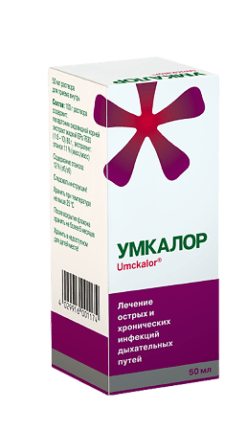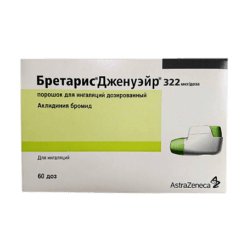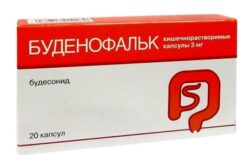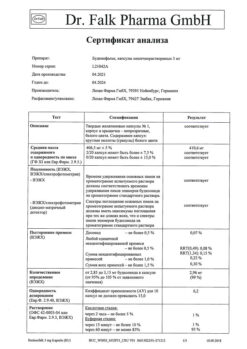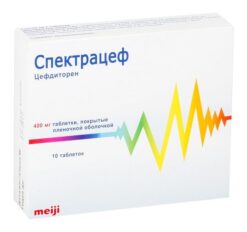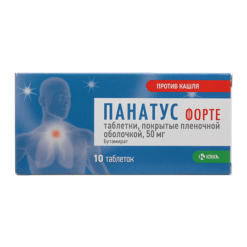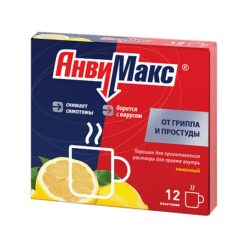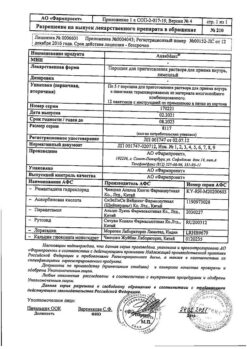No products in the cart.
Elmucin, 300 mg capsules 10 pcs
€11.35 €9.45
Description
Pharmacotherapeutic group
A expectorant mucolytic agent
ATC code: R05CB15
Pharmacological properties
Pharmacodynamics
The effectiveness of erdosteine is due to the action of active metabolites. Thiol groups of metabolites cause rupture of disulfide bridges, which bind glycoprotein fibers to one another, resulting in reduction of elasticity and viscosity of sputum. As a result, erdostein enhances and accelerates clearance of the respiratory tract from the secretion, improves secretory function of the epithelium and increases the efficiency of mucociliary transport in the upper and lower parts of the respiratory tract.
Erdostein has an antioxidant effect and transports free radicals. In particular, erdostein protects the respiratory tract from the damaging effects of cigarette smoke with respect to the inactivation of alpha-1-antitrypsin.
Erdostein increases immunoglobulin A (IgA) concentrations in airway mucosa in patients with chronic obstructive airway disease and also reduces the suppressive effect of tobacco smoke on granulocyte function.
The effect of erdosteine therapy develops on the 3rd-4th day of treatment. Erdosteine as such does not contain free SH-radicals, so it has no damaging effect on the gastrointestinal tract, and the side effects on the digestive system are not different from those of placebo.
Pharmacokinetics
Erdosteine is rapidly absorbed from the gastrointestinal tract and is metabolized in the liver to three active metabolites, the most important of which is N-thiodiglycolyl homocysteine (Metabolite 1 or M1). The half-life (T1/2) is over
5 hours. Repeated administration of erdosteine or ingestion has no effect on pharmacokinetic parameters. The maximum concentration (Cmax) in plasma is 3.46 µg/ml, time to reach maximum concentration (Tmax) is 1.48 hours, area under the concentration-time curve (AUC0-24h) is 12.09.
Erdosteine is 64.5% bound by blood plasma proteins. It is excreted as inorganic sulfates through the kidneys and intestines.
In case of liver dysfunction increase is noted: maximum concentration (Cmax) and area under the curve “concentration-time” (AUC).
The elimination half-life (T1/2) may be increased with marked hepatic impairment.
In case of renal insufficiency, cumulation of metabolites is possible.
Indications
Indications
Respiratory tract diseases with formation of viscous sputum that is difficult to separate (in complex therapy).
Active ingredient
Active ingredient
Composition
Composition
1 capsule contains:
the active ingredient: erdosteine 300 mg;
excipients: microcrystalline cellulose, povidone K30, magnesium stearate;
hard gelatin capsules: capsule body and cap – titanium dioxide, quinoline yellow dye, sunset yellow dye, gelatin.
How to take, the dosage
How to take, the dosage
Take 1 capsule (300 mg) 2 times a day.
If there is no improvement within 5 days of starting this medicine, or if there is a worsening of symptoms, see your doctor.
Interaction
Interaction
When used together, erdosteine increases the concentration of amoxicillin in the bronchial secretion, which allows a more rapid response to therapy compared with amoxicillin monotherapy.
Special Instructions
Special Instructions
In treatment it is necessary to take plenty of fluids, which increases the expectorant effect. In cases of bronchial motility disorders or with a significant volume of sputum secreted, the use of the drug requires caution due to the risk of retention of secretions in the airways and increased risk of infection or bronchospasm.
Impact on ability to drive vehicles, machines
It does not affect the ability to drive vehicles, machines and engage in other activities requiring increased concentration and quick psychomotor reactions.
Synopsis
Synopsis
Contraindications
Contraindications
Hypersensitivity to the ingredients of the drug.
Children under 18 years of age.
Hypatic disorders.
Renal insufficiency.
Homocystinuria (the drug is a source of homocysteine, so amino acid metabolism disorders are possible in patients on a diet with reduced free methionine).
Pregnancy (1st trimester).
The period of breastfeeding.
Cautions
The drug should be used with caution in patients with significant liver dysfunction and in patients with bronchial disease associated with excessive secretion.
Side effects
Side effects
The incidence of adverse reactions is presented according to the WHO classification: very common (â¥1/10 cases), common (â¥1/100 and < 1/10 cases), infrequent (â¥1/1000 and < 1/100 cases), rare (â¥1/10000 and < 1/1000 cases) and very rare (< 1/10000 cases), the frequency is unknown.
Gastrointestinal tract: rare – heartburn, diarrhea; very rare – nausea, epigastric pain, loss or change in taste sensitivity at the beginning of treatment.
Skin and subcutaneous tissue: very rare – allergic reactions: skin redness, edema, eczema; frequency unknown – angioedema.
Respiratory system, chest and mediastinum disorders: very rare – shortness of breath.
Overdose
Overdose
No cases of overdose have been reported. However, in cases of overdose or accidental use in children, gastric lavage and symptomatic therapy are recommended.
Pregnancy use
Pregnancy use
Additional information
| Shelf life | 3 years. Do not use after the expiration date printed on the package. |
|---|---|
| Conditions of storage | At a temperature not exceeding 25 oC. Store out of the reach of children. |
| Manufacturer | Alium JSC, Russia |
| Medication form | capsules |
| Brand | Alium JSC |
Related products
Buy Elmucin, 300 mg capsules 10 pcs with delivery to USA, UK, Europe and over 120 other countries.


